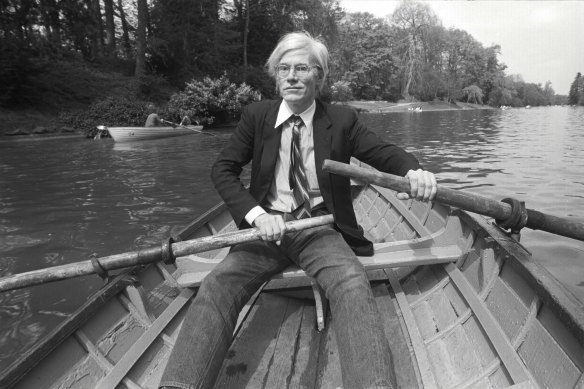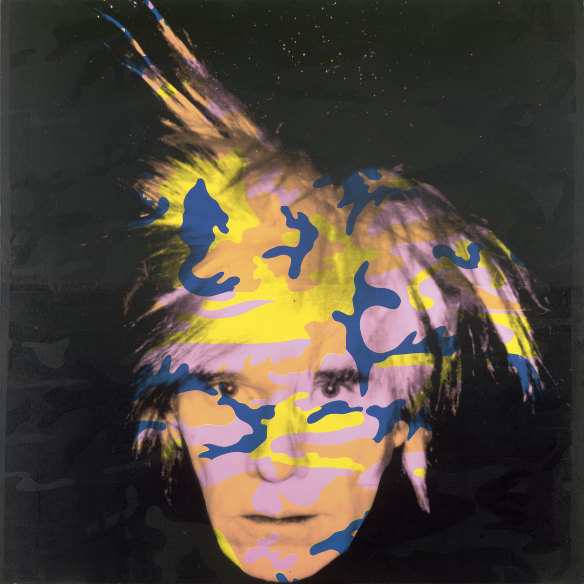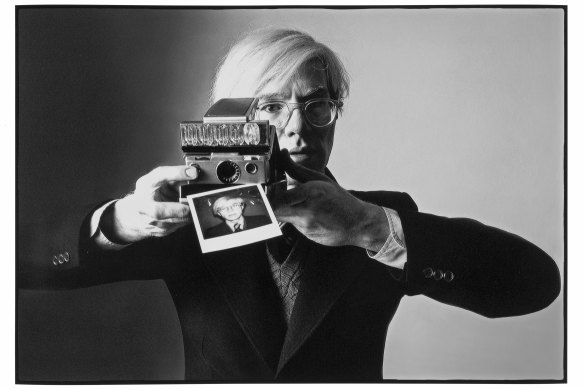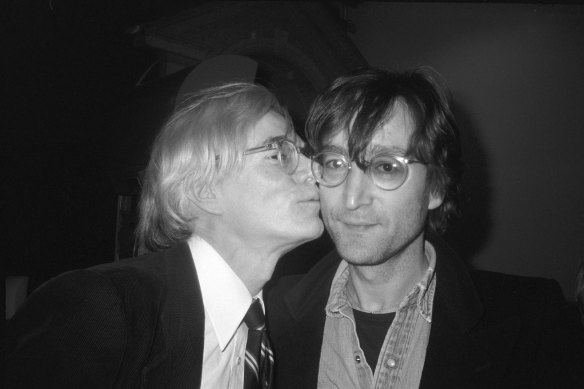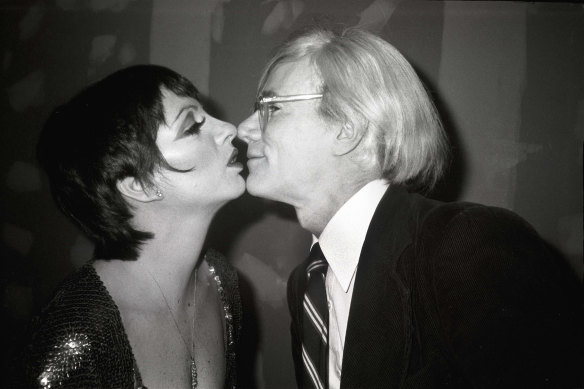Save articles for later
Add articles to your saved list and come back to them any time.
Andy Warhol died in 1987 at the age of 58. Had he managed the standard three score and ten, he would have found himself in a world rapidly becoming addicted to mobile phones and the internet. One thinks, irresistibly, of ducks and water.
Julie Robinson, the Art Gallery of South Australia’s curator of prints, drawings and photographs, has spent the best part of 10 years plotting a Warhol show and Andy Warhol and Photography: A Social Media reflects her scrupulous research and planning. It’s no easy feat to make a fascinating exhibition out of hundreds of diverse images, but this is precisely what she achieved. The fact that the AGSA has not managed to produce a catalogue is truly mind-boggling, as this is the kind of event – an original presentation of a well-known international artist – that most requires one. As such a publication would sell both at home and abroad, there’s no excuse for the omission.
There have been hundreds of Warhol exhibitions in museums around the world, but few devoted to his photography. This is slightly surprising because the artist never went anywhere without a camera, snapping images constantly. Today we all do it with our phones, but in the 1980s it required more effort. As rolls of film needed to be developed, most people took formal, posed photographs.
Andy Warhol in a row boat in Paris’s Bois de Boulogne, 1981.Credit: Christopher Makos
Not Warhol, who used the camera as a visual diary to record details of his private and public life. He took photographs in the street, in the studio, and at parties. He snapped everyone and everything, although celebrities were his favourite prey.
“My idea of a good photograph,” he said, “is one that’s in focus and of a famous person doing something unfamous. It’s being in the right place at the wrong time.” The show is rich with examples, from Bianca Jagger shaving her armpit to Truman Capote asleep on the couch. One may wonder if this preference reveals a sadistic streak in Warhol’s famously blank personality – a sneaking desire to see beautiful people brought back to earth. Or perhaps he was simply following his business instincts, recognising the public’s insatiable appetite for embarrassing pictures of the rich and famous.
Andy Warhol’s Self-portrait no.9, 1986.
It’s not coincidental that Warhol said his favourite photographer was Ron Galella, a notorious paparazzo who provoked both lawsuits and physical violence (Marlon Brando once broke his jaw).
An obsessive voyeur, Warhol was disappointed that he could never get Mick Jagger to take his clothes off. Instead, he photographed the rock star one bit at a time: face, torso, knee, feet. The artist’s buddy, Christopher Makos, who travelled and photographed with him, said Warhol was always trying to catch him in the nude. We know now that Warhol left a large cache of quasi-pornographic images, but none of them are included in this show, which makes do with a few male nudes and bare bottoms.
If we ask why Warhol’s photography has been largely overlooked, it’s most probably because his entire œuvre is so hyper-saturated in the photographic idiom.
Warhol’s paintings and silk-screen prints were invariably based on photographs. He took his famous image of Elvis Presley from a poster for the movie Flaming Star (1960) (often said to be Presley’s best film, if one can imagine different grades of trash). Marilyn Monroe’s face was clipped from a publicity shot for Niagara (1953). The exhibition even includes an original photo of a Campbell’s soup can, taken by Warhol’s friend Edward Wallowitch.
Andy Warhol never went anywhere without a camera, snapping images constantly.Credit: Oliviero Toscani
More than most artists, Warhol’s work was a collaborative enterprise. His famous studio, the Factory, was constantly full of people. Some were working, some being photographed or filmed, many just hanging around. To create his silk screens, Warhol was happy to employ skilled printmakers. When it came to the moving image, he worked with people such as Paul Morrissey, who would eventually assume most of the creative duties, with Warhol’s name attached to the films as a brand.
In subtitling the show, A Social Media, Robinson is emphasising the way Warhol surrounded himself with two kinds of people: those who were to be photographed, and those who were photographing him. In the first category there was room for the whole world. In the second, we find a succession of photographers of varying levels of professionalism. Early on there is Billy Name, who took over camera duties when Warhol became bored with the technical stuff. There was David McCabe, whom Warhol paid to follow and photograph him for a whole year in 1964-65. There were long-term friends and colleagues such as Brigid Berlin and Gerard Malanga; and finally, Makos, a constant companion in the latter part of Warhol’s career, who took those startling pictures of the artist made up as a glamorous blonde woman.
Andy Warhol Kissing John Lennon, 1978, New York.Credit: Christopher Makos
The exhibition includes images by each of these figures, but McCabe is a cut above the rest. As a young, relatively unknown photographer, he made the most of his year with Warhol, snapping an album of memorable black-and-whites. If Warhol’s intention had been to hire a private paparazzo to document his glamorous social life, it came to nothing, as he would never make use of the photos. They would not be published until 2003, 16 years after his death.
McCabe imagined that his subject found the pictures too revealing, but perhaps Warhol felt he was already famous enough by the time the project concluded. The best-known image may be the one of Warhol standing in front of a billboard advertising a Chevrolet, with the tag line: “No.1, Year after year after year.”
Among the countless photos Warhol took himself there are sophisticated examples that reveal the true artist’s eye, notably a 1977 portrait of Muhammad Ali holding his child, with his wife, Veronica, framed in a doorway. Another striking picture from 1978 captures Liza Minnelli backstage after a show, wearing a dressing gown and an expression that says: “Oh, no! You’re not going to photograph me like this?”
Andy Warhol and Liza Minnelli, 1978.Credit: Christopher Makos
Warhol’s celebrity obsession is everywhere on display, in candid snapshots and the formal polaroids he took in preparation for his silkscreen portraits. These works became a lucrative form of “business art” in the 1980s, but the display is mercifully compact, including portraits of two Australians: lawyer Henry Gillespie and collector Loti Smorgon. There’s also film and photo documentation of Warhol shooting Debbie Harry, whom he first met when she was working as a waitress at the club Max’s Kansas City. By 1980, as the lead singer in Blondie, she had become one of the representative faces of the New York music scene. Warhol weirdly told Harry that if he could have any other face it would be hers. She found this flattering, although it makes him sound like the mad doctor in Georges Franju’s Les yeux sans visage (1962), who goes around lifting off young women’s faces.
There are many aspects of Warhol’s carefully constructed persona that we might find repellent, but we don’t have to like him to recognise his significance for the art of the late 20th century and today. More than any other artist, Warhol understood the increasingly dominant role photography would play in our lives. In his pursuit of celebrities, he recognised that fame is power – an equation that would be put to good use by Donald Trump. As for Warhol’s politics, there has rarely been a public figure who remained so studiously neutral.
Had Warhol been alive today he would enjoy one of the biggest social media followings on the planet. There would be an Andy Warhol reality TV show going into its umpteenth season, and most probably a dedicated cable channel. Warhol’s art and merchandise would be sold online to millions of customers. He would revel in a world that considers shopping to be one of the higher art forms. When Warhol said: “The best museum is Bloomingdales’“, he put forward the department store as a model for the public art gallery. It may have sounded facetious at the time, but nowadays it looms as an awesome prophecy.
Andy Warhol and Photography: A Social Media is at the Art Gallery of South Australia until May 14.
John McDonald travelled as a guest of the AGSA.
Most Viewed in Culture
From our partners
Source: Read Full Article

